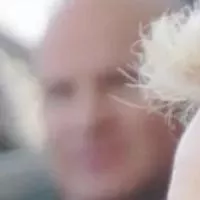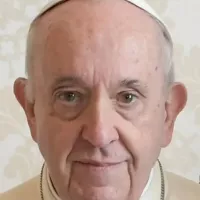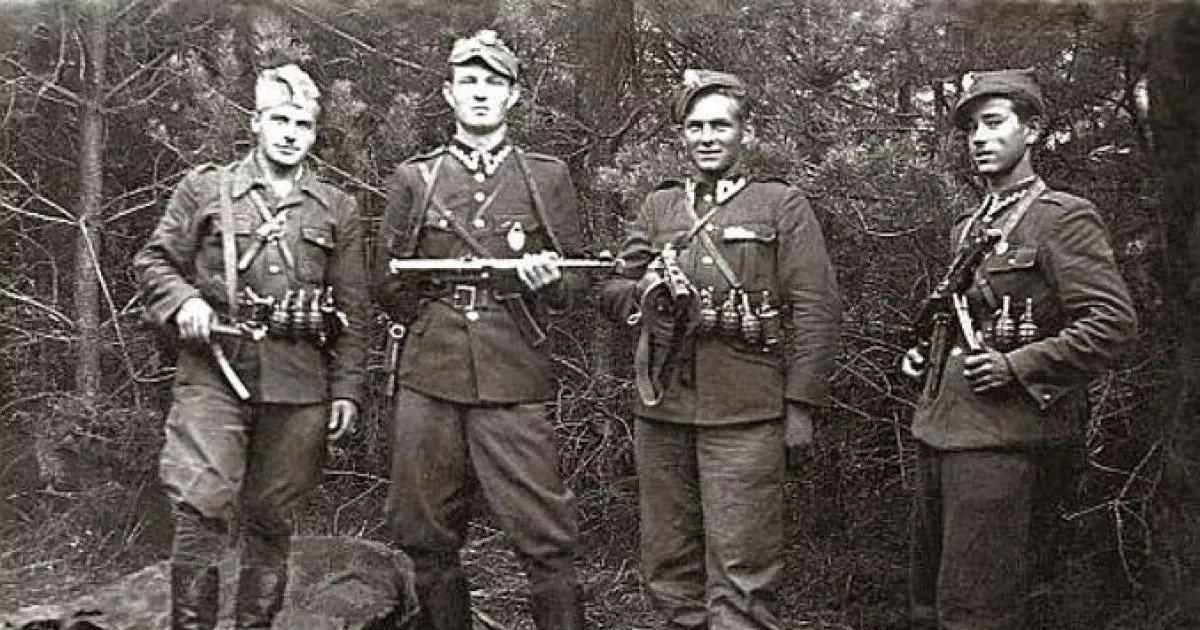The "cursed soldiers" or "indomitable soldiers" were Polish resistance movements formed during and after World War II. These groups, comprised of members from the Polish Underground State, fiercely opposed Soviet imperialism and communism. The terms, coined in the early 1990s, highlight their unwavering resistance.
1943: NIE Formed to Counter Soviet Threat
In mid-1943, NIE, short for "niepodległość" meaning "independence" and "no," was formed as the first AK structure to address the Soviet threat. Its primary objective was to monitor and gather intelligence on Soviet activities while the Polish government-in-exile decided on a course of action.
1944: Stalinist Terror Grips Postwar Poland
From 1944 to 1956, Poland experienced a period of intense Stalinist terror. At least 300,000 Polish civilians were arrested, with some estimates suggesting up to two million arrests. Thousands of death sentences were issued and carried out, resulting in a climate of fear and oppression.
1944: Soviet Union Establishes Puppet Regime in Poland
In 1944, as Soviet forces advanced into Poland, the USSR established a provisional puppet regime called the Polish Committee of National Liberation. This regime was determined to eliminate any opposition, including the Polish Resistance, to solidify its control over Poland.
January 1945: Armia Krajowa Officially Disbands
The Armia Krajowa, a major Polish resistance movement, officially disbanded in January 1945 to avert a direct conflict with the Red Army and the looming threat of civil war over Poland's sovereignty.
March 1945: Trial of the Sixteen: Polish Underground Leaders Falsely Accused
In March 1945, sixteen leaders of the Polish Underground State were captured by the Soviets and subjected to a staged trial in Moscow. They were falsely accused of collaborating with Nazi Germany and sentenced, marking a significant escalation in the persecution of the Polish resistance.
May 1945: Attack on the NKVD camp in Rembertów
In May 1945, Colonel Edward Wasilewski led a heavily armed AK unit in an attack on the NKVD camp in Rembertów, located on the eastern outskirts of Warsaw. The camp held hundreds of imprisoned Polish citizens, including members of the Armia Krajowa. The attack resulted in the destruction of the camp.
May 1945: Battle of Kuryłówka
In May 1945, the Battle of Kuryłówka took place, where partisans from the National Military Union (NZW) fought against the Soviet 2nd Border Regiment of the NKVD. The anti-communist fighters, led by Major Franciszek Przysiężniak ("Marek"), were victorious, killing up to 70 Soviet agents. In retaliation, the NKVD troops burned the village to the ground, destroying over 730 buildings.
May 1945: NIE Disbanded, Transformed into Delegatura Sił Zbrojnych na Kraj
NIE was disbanded in May 1945 and reorganized into the Delegatura Sił Zbrojnych na Kraj ("Armed Forces Delegation for Homeland"), a new organization tasked with managing the transition of former AK soldiers back into civilian life.
June 1945: Augustów Roundup
The "Augustów roundup" was a large-scale anti-partisan operation carried out from June 10th to 25th, 1945, in the Suwałki and Augustów regions of Poland. The operation was a joint effort by the Red Army, the Soviet NKVD, SMERSH battalions, and Polish UB and LWP units, targeting Armia Krajowa resistance fighters. Over 2,000 suspected anti-communist Polish fighters were captured and sent to Soviet internment camps. Around 600 of those captured, known as the "Augustów Missing," are believed to have died in Soviet custody, their bodies buried in unmarked mass graves in present-day Russia. The Polish Institute of National Remembrance recognizes the 1945 Augustów roundup as "the largest crime committed by the Soviets on Polish lands after World War II."
July 1945: Compilation of Information on the Augustów Missing
In July 1945, the Citizen Committee for Search of Suwałki Region Inhabitants who Disappeared in July 1945 began compiling information on the individuals who disappeared during the Augustów Roundup.
August 8, 1945: Delegatura Sił Zbrojnych na Kraj Disbanded
The Delegatura Sił Zbrojnych na Kraj, a post-AK resistance organization, was disbanded on August 8, 1945, marking a decision to cease partisan resistance on Polish territory.
1945: Wolność i Niezawisłość (WiN) Formed to Support Former AK Soldiers
Following the disbandment of the Delegatura Sił Zbrojnych na Kraj, another post-AK resistance organization, Wolność i Niezawisłość ("Freedom and Sovereignty"), or WiN, emerged. WiN focused on aiding former AK soldiers in transitioning from partisan life to civilian life, providing them with resources and false documents to evade the communist regime's persecution.
1946: Massacre of "Cursed Soldiers"
In the autumn of 1946, a tragic event unfolded as a group of 100-200 "cursed soldiers" from the Narodowe Siły Zbrojne (National Armed Forces, NSZ) were tricked into a trap and massacred, highlighting the brutal tactics employed by the communist regime to suppress opposition.
1947: WiN's Activities Weakened by Deception
By 1947, WiN's activities were significantly hampered due to a successful deception campaign by the NKVD and the UB, who tricked several WiN leaders into believing in a genuine amnesty offer. This led to widespread arrests and weakened the organization.
1947: Polish Ministry of Public Security Declares Weakening of Underground Opposition
In 1947, Colonel Julia Brystiger, also known as "Bloody Luna," from the Polish Ministry of Public Security, announced that the "terrorist and political underground" no longer posed a significant threat to the UB. However, she emphasized that the "class enemy" within universities, offices, and factories still needed to be identified and neutralized.
1947: Communist Regime's Amnesty Offer Leads to Arrests
In 1947, the communist regime in Poland declared an amnesty for most wartime resistance fighters. However, many former AK members were arrested despite the promises, leading to a deep distrust of the government.
1952: WiN Officially Disbanded
In 1952, Wolność i Niezawisłość (WiN) was officially disbanded, marking the end of a significant chapter in the Polish anti-communist resistance.
1956: Political Amnesty Frees Thousands of Former AK Soldiers
During the Polish October of 1956, a period of political liberalization, a political amnesty led to the release of 35,000 former AK soldiers from prisons. However, some partisans remained active, unwilling or unable to return to civilian life.
1956: End of Stalinist Terror in Poland
The year 1956 marked the end of the Stalinist terror in Poland.
1957: Stanisław Marchewka, "Cursed Soldier," Killed
Stanisław Marchewka, a "cursed soldier" known as "Ryba" ("The Fish"), was killed in 1957, illustrating the ongoing struggle against the communist regime.
1963: Józef Franczak, the Last Known "Cursed Soldier," Killed
In 1963, Józef Franczak, the last known "cursed soldier," was killed in an ambush. This marked the end of an era of resistance against the communist regime in Poland.
1963: Józef Franczak, Last AK Partisan, Killed
Józef Franczak, known as "Lalek" ("Dollar"), the last surviving AK partisan, was killed in 1963, almost two decades after World War II ended, marking the end of an era of armed resistance.
1967: Adam Boryczka, Cichociemny Member, Released from Prison
Adam Boryczka, the last member of the elite British-trained Cichociemny ("The Silent and Hidden") intelligence and support group, was released from prison in 1967 after years of imprisonment.
1989: Convictions of AK Soldiers Declared Invalid
Following the fall of communism in Poland in 1989, the convictions of AK soldiers were finally declared invalid and annulled by Polish law, providing long-overdue recognition and justice.
1990: Publication of "Not Only Katyń"
The book "Not Only Katyń" by Ireneusz Sewastianowicz and Stanisław Kulikowski was published in 1990. The book includes a section on the "Augustów Missing," compiled by the Citizen Committee for Search of Suwałki Region Inhabitants who Disappeared in July 1945.
Mentioned in this timeline
The Union of Soviet Socialist Republics USSR existed from to...
Germany officially the Federal Republic of Germany is a Central...
Russia officially the Russian Federation is a transcontinental country extending...
Poland officially known as the Republic of Poland is a...

Justice in its broadest sense is the concept of treating...

Moscow is the capital and largest city of Russia located...
Trending
34 minutes ago Brittney Sykes leads Mystics, healthy physically and mentally; Aces host Mystics opener.

34 minutes ago Skip Bayless Criticizes Anthony Edwards, Creates 'Can't-Man' Nickname After Playoff Game Meltdown

34 minutes ago Cal Raleigh Could Make Baseball History, MVP Potential Discussed, Mariners Hitting Philosophy

2 months ago Jennie Garth remembers Luke Perry, Shannen Doherty; says they're 'alive in my mind'.

35 minutes ago Kenny Smith Compares Michael Jordan and Lebron James, Highlighting Jordan's Unmatched Impact
35 minutes ago Taylor Ward's grand slam fuels Angels' victory, extending their winning streak to seven games.
Popular

Jupiter the fifth planet from the Sun is the Solar...

Cristiano Ronaldo often nicknamed CR is a highly decorated Portuguese...

Steve Irwin the Crocodile Hunter was an influential Australian zookeeper...

Pope Francis is the current head of the Catholic Church...

LeBron James nicknamed King James is a professional basketball player...

Kash Patel is an American lawyer and former federal prosecutor...
